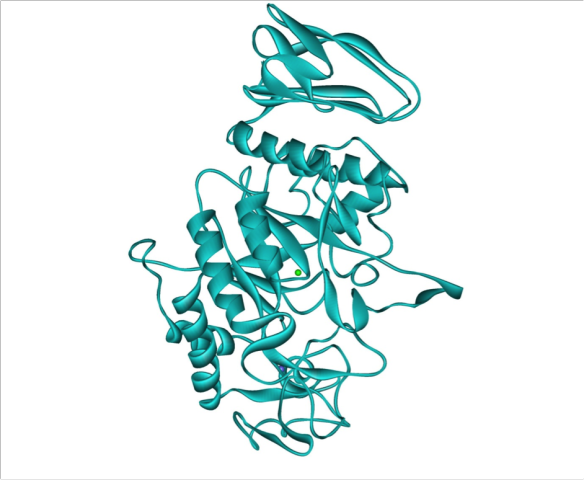The Start of Digestion: Salivary α-Amylase
What does it look like?

Human salivary α-amylase (cyan) with calcium ion (purple ball) and chloride ion (green ball).
What is it?
If you chew bread for long enough, have you ever wondered why it starts to taste sweet? The answer is thanks to an enzyme called α-amylase. Digestion begins in the mouth when you chew food and saliva contains the enzyme α-amylase, which breaks down starch into smaller polysaccharide fragments that taste sweet.
Specifically, α-amylase hydrolyses the α(1, 4) link between glucose monomers in starch to create maltose, maltotriose and α-dextran. When the food is swallowed and enters the stomach the α-amylase is inactivated by the low pH in the stomach. However, the pancreas also produces α-amylase for the further digestion of carbohydrates in the small intestine. The α-amylase produced by the pancreas mainly breaks down carbohydrates into maltose which is then further broken down into glucose by an enzyme called maltase. The glucose molecules are then transported into cells in the small intestine and then transported to tissues by the blood.
Where does it come from?
The structure of human salivary α-amylase was solved by Narayan Ramasubbu et al. [1] at the State University of New York in 1996. The above structure was from the Protein Data Bank (PDB code: 1SMD).
[1] N. Ramasubbu, V. Paloth, Y. Luo, G.D. Brayer and M.J. Levine (1996) Structure of Human Salivary α-Amylase at 1.6 Å Resolution: Implications for its Role in the Oral Cavity. Acta Cystographica Section D 52: 435-446.






